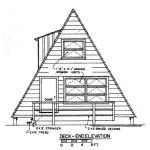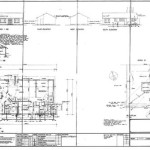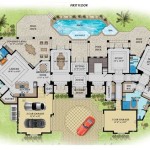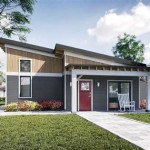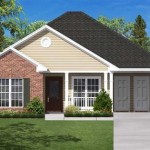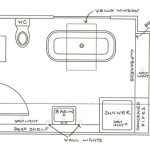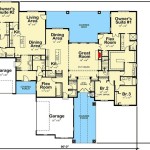House Plans With Detached Mother-In-Law Suites: A Comprehensive Guide
The demand for adaptable living spaces has surged in recent years, leading to increased interest in house plans that incorporate detached mother-in-law suites, also known as accessory dwelling units (ADUs) or granny flats. These structures offer a blend of independence and proximity, catering to multi-generational families, caregivers, or those seeking rental income opportunities. This article provides a comprehensive overview of house plans with detached mother-in-law suites, exploring their benefits, key design considerations, potential challenges, and relevant building codes.
A detached mother-in-law suite is a self-contained living space separate from the main house. This separation provides privacy and autonomy for both the primary residents and the occupants of the suite. These suites typically include a bedroom, bathroom, kitchen or kitchenette, and living area. Depending on the specific needs and zoning regulations, they may also feature separate entrances, utilities, and parking spaces.
Benefits of Detached Mother-In-Law Suites
The incorporation of a detached mother-in-law suite into a property offers various advantages, impacting the financial stability, lifestyle, and overall value of the home. These benefits can be significant for families navigating the complexities of modern living.
Multi-Generational Living: One of the most significant benefits is facilitating multi-generational living. This allows aging parents or adult children to live close to family while maintaining their independence. This arrangement can provide support for elderly relatives, assist with childcare, and strengthen family bonds. It also enables shared responsibilities and reduced costs for both parties involved. The proximity allows for easy access to assistance, companionship, and shared meals, fostering a sense of community within the family while respecting individual boundaries.
Rental Income Potential: Detached suites can serve as rental units, generating a steady stream of income. This income can help offset mortgage payments, fund retirement savings, or cover other household expenses. The demand for rental properties is often high, particularly in urban areas or locations with limited housing options. Renting out a detached suite can provide a significant financial boost and increase the overall value of the property. It's essential to research local regulations regarding rental properties, including licensing requirements and tenant rights.
Caregiving Support: For families providing care for an elderly or disabled family member, a detached suite offers a practical and compassionate solution. It allows caregivers to be readily available to provide assistance while preserving the privacy and dignity of both the caregiver and the individual receiving care. The proximity simplifies tasks such as medication management, meal preparation, and personal care. It also reduces the stress and burden associated with caregiving, allowing for a more sustainable and fulfilling arrangement.
Increased Property Value: Adding a detached mother-in-law suite can significantly increase the property's market value. The additional living space and potential rental income make the property more attractive to buyers, especially those seeking multi-generational living options or investment opportunities. The increased value can also result in higher equity, providing financial flexibility for the homeowner. Furthermore, a well-designed and maintained suite can enhance the overall aesthetic appeal of the property, further contributing to its value.
Key Design Considerations for Detached Mother-In-Law Suites
Designing a detached mother-in-law suite requires careful planning and attention to detail to ensure functionality, comfort, and compliance with local regulations. The design should consider the specific needs of the occupants, the overall aesthetic of the property, and the available space.
Accessibility: Accessibility is a crucial consideration, particularly if the suite is intended for elderly or disabled occupants. Features such as ramps, wider doorways, grab bars in bathrooms, and easy-to-reach switches and outlets should be incorporated into the design. Universal design principles should be applied to create a space that is usable by people of all abilities. This includes minimizing steps, providing adequate maneuvering space, and ensuring that all necessary elements are within reach. The design should also consider potential future accessibility needs, allowing for modifications as necessary.
Privacy and Soundproofing: Maintaining privacy for both the main house and the suite is essential. Careful placement of windows and doors, as well as the use of soundproofing materials, can help minimize noise transfer. Landscaping can also be used to create a visual barrier and enhance privacy. Consider the placement of the suite in relation to the main house, taking into account factors such as noise levels, traffic patterns, and views. Soundproofing measures, such as insulated walls and ceilings, can significantly reduce noise transmission between the two structures.
Size and Layout: The size and layout of the suite should be tailored to the needs of the occupants. A well-designed suite should include a comfortable bedroom, a functional bathroom, a practical kitchen or kitchenette, and a comfortable living area. The layout should maximize the use of space and provide adequate storage. Consider the lifestyle of the occupants when determining the appropriate size and layout. For example, an individual who enjoys cooking may require a larger kitchen, while someone who spends most of their time relaxing may prefer a larger living area. The layout should also be designed to allow for easy movement and access to all areas of the suite.
Aesthetics and Integration: The design of the suite should complement the overall aesthetic of the main house and the surrounding landscape. Using similar materials and architectural styles can create a cohesive and harmonious appearance. The suite should not appear as an afterthought but rather as an integral part of the property. Consider the landscaping around the suite, incorporating elements such as trees, shrubs, and flowers to create a welcoming and attractive environment. The exterior of the suite should be well-maintained and in keeping with the overall aesthetic of the property.
Potential Challenges and Building Codes
Developing a detached mother-in-law suite can present various challenges, ranging from zoning restrictions to construction costs. Understanding these potential obstacles and adhering to relevant building codes is crucial for a successful project.
Zoning Regulations and Permits: Zoning regulations vary widely depending on the location and can significantly impact the feasibility of building a detached suite. Some jurisdictions may have restrictions on the size, location, or use of accessory dwelling units. It is essential to research local zoning ordinances and obtain the necessary permits before starting construction. Failure to comply with zoning regulations can result in fines, delays, or even the demolition of the structure. Consult with local planning officials to understand the specific requirements in your area. This may involve submitting detailed plans, attending public hearings, and obtaining approvals from various agencies.
Construction Costs: The cost of building a detached mother-in-law suite can vary depending on the size, design, materials, and labor costs. It is essential to develop a realistic budget and obtain multiple quotes from contractors. Unexpected costs can arise during construction, so it is wise to set aside a contingency fund to cover unforeseen expenses. Consider the long-term costs associated with the suite, such as utilities, maintenance, and insurance. Explore options for reducing construction costs, such as using sustainable materials, simplifying the design, and performing some of the work yourself.
Building Codes: Detached mother-in-law suites must comply with all applicable building codes, which are designed to ensure the safety and structural integrity of the structure. These codes cover aspects such as fire safety, electrical wiring, plumbing, and ventilation. It is essential to work with a qualified architect or contractor who is familiar with local building codes and can ensure that all requirements are met. Building codes can be complex and vary depending on the location, so it is important to stay informed about the latest regulations. Failure to comply with building codes can result in fines, delays, and safety hazards.
Utility Connections: Connecting the suite to utilities such as water, sewer, electricity, and gas can be complex and expensive. Depending on the location, it may be necessary to run new utility lines from the main house or install separate meters. It is essential to consult with utility companies and obtain the necessary permits before making any connections. The cost of utility connections can vary depending on the distance from the main house, the complexity of the installation, and the availability of existing infrastructure. Consider the energy efficiency of the suite and incorporate features such as solar panels or energy-efficient appliances to reduce utility costs.
In conclusion, integrating a detached mother-in-law suite into a property can offer numerous advantages, from facilitating multi-generational living to generating rental income and increasing property value. Careful consideration of design elements, potential challenges, and adherence to local regulations are essential for a successful project. By thoroughly researching and planning, homeowners can create a functional, comfortable, and valuable addition to their property.

Homes With Mother In Law Suites

House Plan 65862 Tuscan Style With 2091 Sq Ft 3 Bed 2 Bath 1

6 Bedroom Country Style Home With In Law Suite The Plan Collection

House Plans With In Law Suites Houseplans Blog Com

So I Have A Project Where Am Designing Main House And An Attached Mother In Law Suite The Hou Guest Plans Multigenerational

One Story With In Law Suite Plan 2286

Traditional Home With Mother In Law Suite 35428gh Architectural Designs House Plans

Adding An In Law Suite To Your Home Designing Perfect House

Arts And Crafts Country Home With 5 Bedrms 2473 Sq Ft Plan 108 1692

House Plans With In Law Suites Houseplans Blog Com

